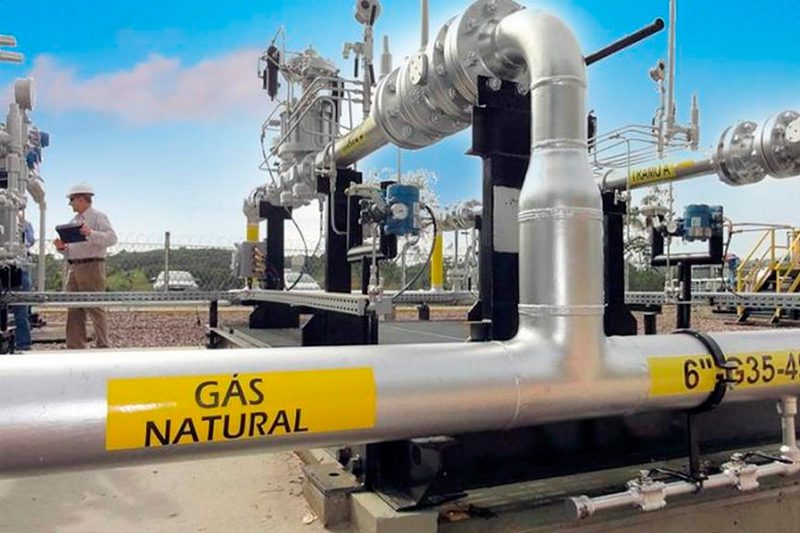Argentina’s Plan Gas IV, which aimed to incentivize natural gas production in the country, was introduced too late, according to GlobalData. The data and analytics company notes that the plan’s delays have meant production has not ramped up enough to get the country through the winter, and it will be forced to rely on importing liquefied natural gas (LNG) at record-high prices.
Svetlana Doh, Upstream Oil & Gas Analyst at GlobalData, comments: “Plan Gas IV’s delay is a shame, as it has introduced some positive changes. For example, operators must commit to supply contracted volumes for a period of four years – with a possibility to extend the terms for another four. There is also now a maximum price for each basin, which should not exceed $3.21 per metric million british thermal unit (mmbtu) of gas, and the contract prices being in US dollars give more certainty for operators in the mid-term. In fact, ever since the plan was initiated, drilling activities in the Neuquina basin, home to the Vaca Muerta shale, have picked up and production rose by almost 19% in the period of February-June 2021. It is just all a bit too late to meet winter energy demand.
“Argentina’s energy supply demand is still way below its production capacity when it comes to natural gas. Further, this production is forecast to decline at an average 3.4% in the next five years.”
Not the first time that incentives have been introduced too late
In 2016, the Argentinian Government’s incentives resulted in more output and an increase in domestic supply. By 2018, Argentina had substantially narrowed the natural gas supply-demand gap and was very enthusiastic about LNG exporting opportunities. However, natural gas production dropped by almost 15% by the month of March 2020 due to the global pandemic. In attempt to sustain drilling operations, the government offered a guaranteed price of $45 per barrel for crude oil producers and $3.5 per mmbtu for upstream natural gas.
Doh adds: “The plan announced in June 2020 did not allow enough time for production to react to the incentive. As the winter months of June to August show the highest domestic demand for gas, Argentina had to rely on imported LNG. This year the country is experiencing a bit of déjà vu as Argentina is facing the same situation again.”
Turning to LNG to meet demand
The gap between production and demand in 2021 will force Argentina to yet again turn to imports of natural gas to plug the gap over winter. However, this time, international LNG import prices have tripled.
Doh continues: “Continuous reliance on gas import has had a detrimental effect on Argentina’s unstable economy, and the government is constantly searching for ways to make unconventional production attractive for investments that increase its production.”
The role of conventional and unconventional sources
Both the country’s economy and domestic energy demand is heavily dependent on conventional natural gas production. According to GlobalData’s Oil & Gas Intelligence Center, natural gas production accounts for almost 60% of the overall hydrocarbon supply in Argentina. Even though the country’s overall natural gas output is declining at an average 3.4% in the next five years, the unconventional portion of production is projected to grow by 9%.
Doh adds: “Most of the country’s shale reserves are concentrated in the large Vaca Muerta formation. Argentina will be looking to further incentivise developments of natural gas, including unconventional developments in Vaca Muerta.”
Further production declines expected in future
There are two planned projects in Vaca Muerta expected to come online between 2021 and 2024: Bajo Del Choique – La Invernada and Parva Negra.
Parva Negra is developed by Pampa Energia, Gas y Petroleo del Neuquen, Exxon Mobil Corp (ExxonMobil) and Qatar Petroleum, with 42.5%, 15%, 29.75% and 12.75% stake interest, respectively. The field is expected to pump its first oil in 2021 with a peak production rate of 1.34 mboed in 2023.
The second development, Bajo Del Choique – La Invernada, is operated by ExxonMobil with 63% equity. The project has first undergone a pilot stage and then was decided to be moved to the full development in June 2019. Peak production rate is expected to be reached within first few years of development and reach almost 52,000 boed.
Doh notes: “Bajo del Choique is one of few pilot projects in Vaca Muerta that is in full development. However, combined production from these two projects will barely compensate for the declining production from the mature fields, making overall country’s total production to decline.”
Natural gas production is forecast to decline at an average 3.4% in the next five years to reach 3,650 million cubic feet of natural gas per day (mmcfd) by 2025. This is 17.7% lower than the 4,437mmcfd observed in 2021.



